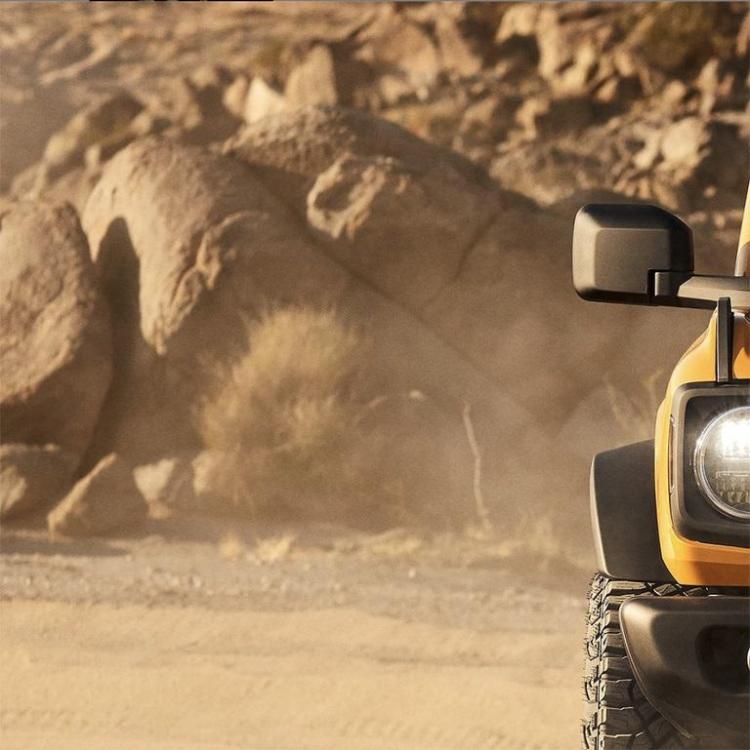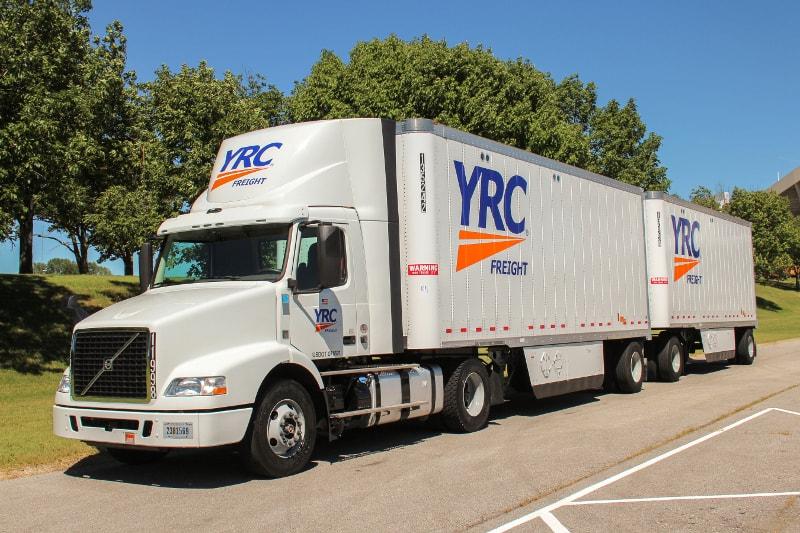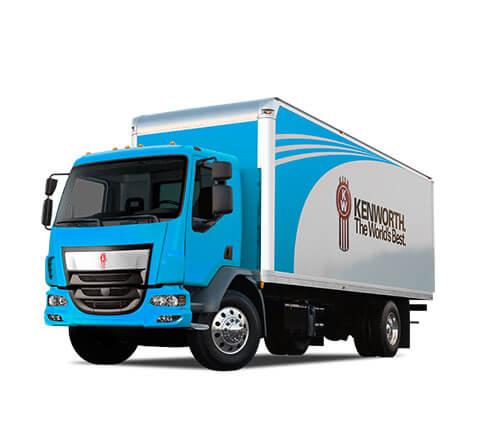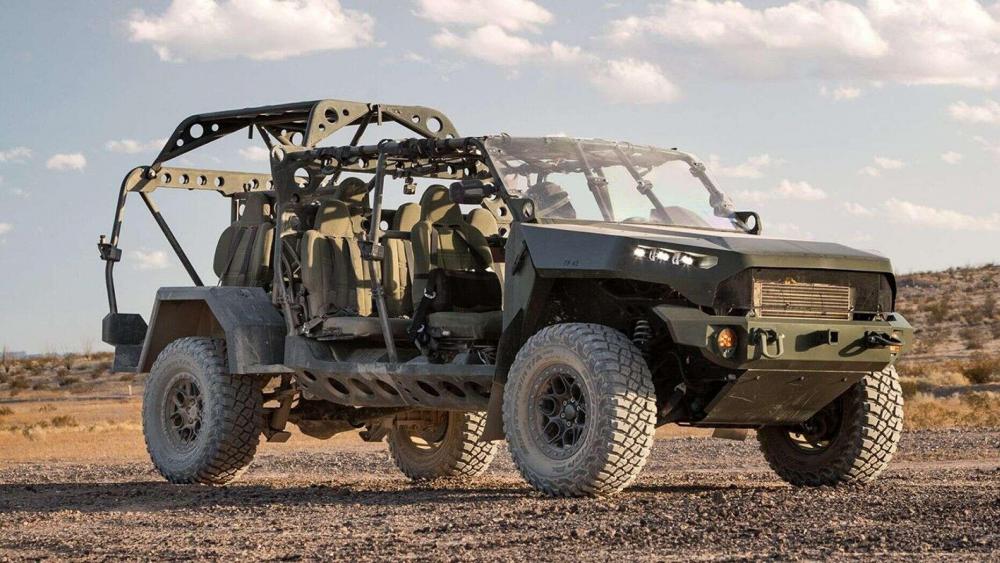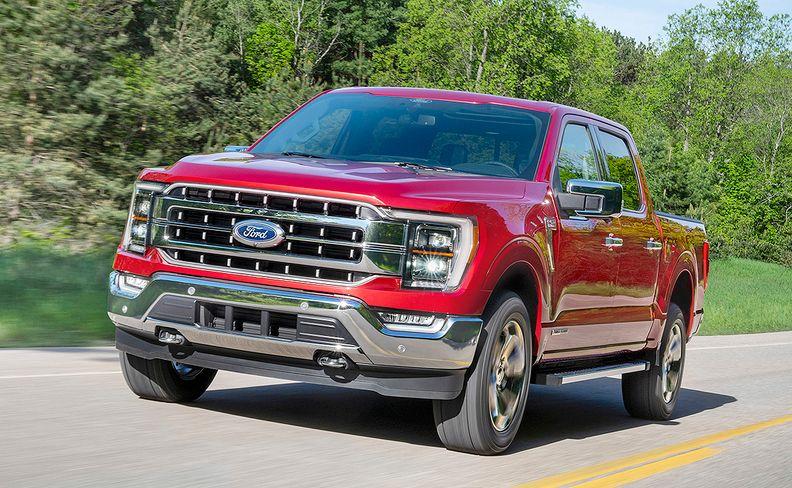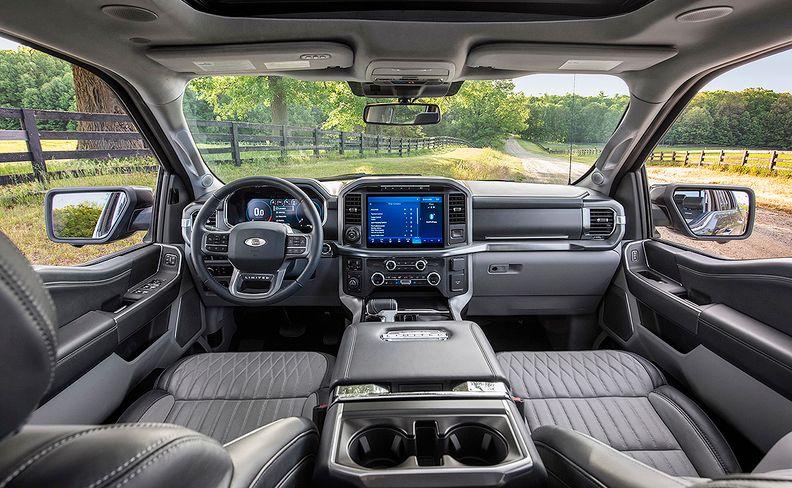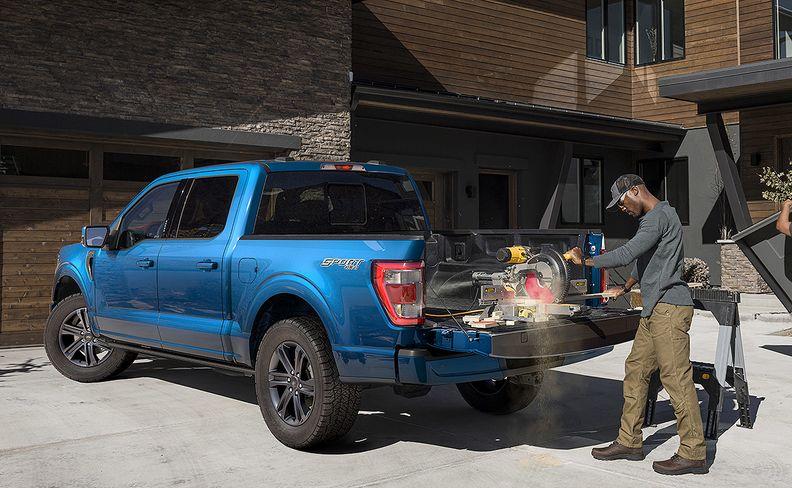
kscarbel2
Moderator-
Posts
18,539 -
Joined
-
Days Won
112
Content Type
Profiles
Forums
Gallery
Events
Blogs
BMT Wiki
Collections
Store
Everything posted by kscarbel2
-
U.S. Treasury to Loan $700 Million to Trucking Firm YRC
kscarbel2 replied to kscarbel2's topic in Trucking News
Good catch! Everyone should read this (even though it's CNN). -
Lincoln kills Continental, a $1 billion investment Michael Martinez, Automotive News / July 1, 2020 DETROIT — Lincoln Motor Co. confirmed Wednesday it will end production of the Continental at the end of 2020 as the luxury brand abandons sedans. U.S. sales of the Continental, reintroduced in 2016, slowed in recent years as customers shifted to the brand's growing crossover lineup. Lincoln announced this year that it would end production of its other sedan, the MKZ, at the end of the year. "Lincoln is investing in growth segments and the brand will feature a full portfolio of SUVs, including a fully electric vehicle in the future," the brand said in a statement. "Lincoln will continue to keep its newest SUVs fresh and we will have more news to share later this year; however, as the full-size premium sedan segment continues to decline in the U.S., we plan to end production of the Lincoln Continental at the end of this year." Lincoln informed workers Wednesday at the Flat Rock Assembly Plant that Continental production would end. “We build to customer demand and customer demands are changing,” John Savona, Ford vice president, North American Manufacturing, said in a letter. “Lincoln is important to Ford Motor Company and we know it has a bright future.” Lincoln brought back the Continental in 2016 as the flagship vehicle for a rebounding brand. It was one of the first models to feature Lincoln’s new mesh grille and was the first product to include 30-way massaging seats, which have become popular options on more recent models. Sales hit 12,012 in 2017 but fell steadily from there. Officials attempted to juice sales with a hyper-limited run of coach-door models in 2019. A spokeswoman said the brand would offer a 2021 Continental in China. Origins The Continental is among Ford's most revered nameplates. It joined Lincoln's lineup in 1939, when it was developed as a one-off vehicle for then-Ford President Edsel Ford, who had fallen in love with the long hoods, short trunks and rear-mounted spare tires of European sports cars on a recent trip overseas. In 1951, the Museum of Modern Art called it one of the eight most important cars before World War II. Architect Frank Lloyd Wright considered the original Continental "the most beautiful car in the world." It gained cachet through the 1950s and '60s as it was used in movies and boasted celebrity drivers such as Clark Gable, Rita Hayworth and Mickey Rooney. It also served as the limousine of U.S. presidents, notably carrying John F. Kennedy the day he was assassinated. In total, nine generations of Continentals were produced before the nameplate was shelved in 2002. Resurrection Designers were thrilled when Ford officials informed them they’d resurrect the vehicle for the 2017 model year [at a cost over $1 billion]. Originally, they were told only that they were supposed to create a “large Lincoln.” When no standout designs emerged, the automaker’s leadership team told them they’d be crafting the next Continental. “You could almost see an immediate change in the room,” then-Lincoln President Kumar Galhotra told Automotive News. “Right there was a very important lesson in the emotion behind the name.” While the 10th generation vehicle failed to gain traction in a utility-heavy market, Lincoln's dealer council as recently as February was lobbying the brand to remain in the sedan segment. "You only have to look at Tesla," Tom Lynch, chairman of the Lincoln National Dealer Council, told Automotive News. "If you have a strong product, people are going to want it, and they're going to want to buy it. What that looks like for Lincoln going forward, I'm not sure of."
-
I'm very sorry to hear that. Discouraging. Please do contact the museum.
-
Ford to take $100 refundable deposits for Bronco Michael Martinez, Automotive News / June 30, 2020 DETROIT — Ford Motor Co. will begin accepting $100 refundable deposits for the 2021 Bronco immediately after revealing the SUV on July 13. The deposit essentially puts customers in line for the vehicle, allowing them to configure it and choose a dealership. Ford will convert those deposits into completed orders at a later date, when the customer confirms final pricing and specs. The process is similar to what Ford offered with the Mustang Mach-E, although customers had to shell out $500 to earn a spot in line for the electric crossover, which hits showrooms later this year. The deposit trend was popularized by Tesla, which last year began accepting $100 refundable deposits for its Cybertruck. Tesla CEO Elon Musk has said the company received more than 250,000 deposits. The news of the refundable deposit first appeared on Bronco fan forums yesterday, and a Ford spokesman confirmed the plan to Automotive News. Ford will unveil the Bronco, along with the smaller Bronco Sport crossover, on July 13. The reveal has been postponed twice since the original spring timing. The Bronco is expected to go on sale early next year. Ford recently revamped its accessories business and hopes to offer hundreds of add-ons at launch. .
-
You should try contacting the parts department at your Mack brand dealer first to check availability. At least, you should be able to get parts numbers. If they say through Volvo they're no longer available (NLA), ask them to please cross the Mack part numbers (if that's what they have) to the vendor part numbers. For example, Mack dealers used to have a comprehensive Mack-to-Vendor cross-reference book. Or, I assume dealers can still call the Mack (Volvo) specifications department and obtain the vendor numbers.
-
The Wall Street Journal / July 1, 2020 WASHINGTON—The U.S. government plans to lend $700 million in coronavirus stimulus funds to trucking firm YRC Worldwide Inc., in exchange for a 29.6% equity stake in the company, the Treasury Department said Wednesday. The Treasury said publicly traded YRC qualified for the loan under a provision of the $2.2 trillion law Congress enacted in late March that authorized $17 billion for companies deemed essential to national security. .
-
. . . . . . . . .
-
Deutz builds superb engines.
-
Heavy Duty Truckiing (HDT) / June 30, 2020 The Kenworth K370 cabover introduces a new airbrake package with a 23,000-pound rear axle for enhanced road capacity. Combined with the K370’s standard 12,000-pound front axle, the new axle offering increases the K370’s gross combination weight rating to 35,000 pounds. The package features the Dana S23-172 or S23-172E rear axle, 1710 drivelines, 22.5-inch tires, 16.5- by 7-inch brakes, cast drums, hubs, and slacks. The package is not available with rear disc brakes. “This enhancement for the Kenworth K370 cabover offers customers with more choices to expand the product line into a wider range of medium-duty applications. The K370 provides customers with excellent maneuverability and ease of service,” said Laura Bloch, Kenworth assistant general manager for sales and marketing. The Kenworth K370 is powered by the 6.7L PACCAR PX-7 engine, which is rated up to 260 hp and 660 lb.-ft. of torque. The engine delivers an exceptional power-to-weight ratio for the medium-duty market, according to Kenworth. Additionally, the K370 is standard with the 2100 HS Allison 5-speed automatic transmission. Kenworth notes that a key advantage of the K370 cabover over medium-duty conventional trucks is its 55-degree wheel cut providing a tighter turning radius and greater maneuverability for operating in crowded urban environments. The Kenworth cabover also offers a large windshield for enhanced visibility, and room to carry a three-person crew with an air-suspended driver seat and two-person bench seat. With a bumper to back of cab (BBC) of only 63.4 inches, the Kenworth K370 provides increased room for body installations when compared to medium-duty conventional products, according to the truckmaker, enabling the K370 to haul more payload with a shorter overall length.
-
"A" denotes an engineering improvement to the original 55QS29309 part number (no "A"). And so would a "B", "C" and so forth. But it has no relationship with the standard R/U/DM applicable 55QS23. And when there is no "P" variation in the part number, it is considered to be a P1 (e.g. 55QS29309AP1).
-
GM Defense wants to win the Army's Infantry Squad Vehicle contract
kscarbel2 replied to kscarbel2's topic in Odds and Ends
GM Defense lands $214 million Army contract Automotive News / June 29, 2020 DETROIT -- GM Defense landed a $214.3 million contract to build infantry squad vehicles for the U.S. Army. Based on the 2020 Chevrolet Colorado ZR2 midsize truck's architecture, each vehicle will have "a cargo superstructure powered by a 186-horsepower, 2.8L Duramax turbo-diesel engine, and six-speed automatic transmission," GM said in a statement on Saturday. The Army authorized the purchase of 649 vehicles and can increase that to 1,070 to reach the full $214.3 million amount. If the Army expands production to 2,065 vehicles, then more dollars would be allotted to the contract. GM Defense will build and receive payment for 27 vehicles in the first year of the contract. The first eight are due on Oct. 27 for production qualification testing. Ricardo Defense Inc., which specializes in government defense programs, will partner with GM Defense to "support key product logistics and fielding requirements." https://www.gmdefensellc.com/site/us/en/gm-defense/home.html . -
Financial Times / June 28. 2020 The US health secretary warned on Sunday that the window to halt the spread of coronavirus across America was closing after a clutch of southern states reported record increases in cases. The US has now registered 2.5 million cases and more than 125,000 deaths from the disease — a quarter of the 10 million infections and half a million fatalities around the world, despite the country comprising little more than 4 percent of the global population. “The window is closing,” Mr Azar told Meet the Press on Sunday. He urged individual states to boost community-wide testing and collect blood plasma donated by patients who have recovered from the virus to bolster available treatments. “We have to act, and people as individuals have to act, responsibly. We need to social distance, we need to wear our face coverings.” Mr Azar said the surge in cases had nothing to do with states reopening but New York governor Andrew Cuomo blamed the increases on a failure to act earlier. “I don’t think this is a second surge . . . I think this is a continuation of the first wave and it was a failed effort to stop the first wave in the country,” he told Meet the Press, accusing the Trump administration of being “in denial about the problem”. “I'm really appealing to every Texan to wear a mask,” said Dr Deborah Birx, a member of the White House coronavirus task force. She said the alarming increase in rates of hospitalization in intensive care among people aged 20 to 40 in the past fortnight indicated a worrying level of community spread. The US recorded more than 42,000 new cases nationwide on Sunday and 500 deaths, according to Johns Hopkins University. This was a fall from the 45,000 new cases recorded on Friday, which was a new single-day high for the country. On that day, 13 states set record highs for the seven-day average of new cases. On Sunday, Georgia reported 2,225 new cases while Arizona said infections increased by 3,857, both record daily totals for the states. Tom Frieden, former director of the Centers for Disease Control and Prevention, told Fox News Sunday that the virus had “the upper hand” and forecast that deaths would lag new cases by about a month. “We’re moving too fast,” he said of states loosening restrictions. He added that numbers were set to get worse in coming weeks, citing a rapid upswing in Arizona, Texas, Florida and South Carolina. He estimated at least 15,000 more people would die in the US during the next month. Florida state’s health department reported 8,530 new cases on Sunday — shy of a record 9,636 new cases on Saturday — bringing the state’s total to 141,075 and 3,419 deaths. “Three weeks ago this is probably one of the safest places to be in the country, and I don’t think that is true any more,” said Kami Kim, an infectious diseases doctor at Tampa General Hospital. “It is probably right now safer to be in New York than it is to be here.”
-
We're in no position to criticize anyone.
-
https://www.linkedin.com/posts/autocar_autocar-pennsylvania-alwaysup-activity-6681953144869576705-6Qqy
-
Navistar Taps COO Lisboa as CEO, Clarke Executive Chairman
kscarbel2 posted a topic in Trucking News
The Street / June 26, 2020 Navistar named its operations chief, Persio Lisboa, as CEO of the construction and farm machinery stalwart. Troy Clarke becomes executive chairman. Navistar International shares rose Friday after it named its operations chief, Persio Lisboa, president and chief executive. Troy Clarke, who has been president, CEO and a director since April 2013, and chairman since February 2017, becomes executive chairman. Lisboa, 54, a 32-year veteran of the Lisle, Ill. company, had been executive vice president and COO. He takes the helm July 1. Clarke said in a statement that he'll be moving toward retirement. Clarke will continue to manage the company's discussions with Volkswagen's truck division, Traton. In January Traton offered to acquire Navistar for $35 a share cash. At the time Traton already held 16.8% of Navistar. Traton produces trucks and other commercial vehicles under a variety of brands including Volkswagen, MAN and Scania. Navistar shares at last check were up 2.2% to $26.69. "Together, the Navistar team and I are committed to delivering on our Navistar 4.0 strategy," Lisboa said. "We have strong momentum with our new-product programs, including those under development with Traton. The execution of our Lean Manufacturing 4.0 vision is on track." Earlier this month, Navistar reported a second-quarter loss due to disruption from covid-19 as orders for the company's Class 8 truck fell from about 3,000 per week in February to 1,000 a week in April. "As freight demand declined in the quarter, truck utilization dropped and rates fell," Clarke said. "With excess trucking capacity, companies reassessed their needs, especially in the general freight, rental leasing and private fleet segments." -
Reuters / June 26, 2020 Scientists are only starting to grasp the vast array of health problems caused by the novel coronavirus, some of which may have lingering effects on patients and health systems for years to come. Besides the respiratory issues that leave patients gasping for breath, the virus that causes COVID-19 attacks many organ systems, in some cases causing catastrophic damage. “We thought this was only a respiratory virus. Turns out, it goes after the pancreas. It goes after the heart. It goes after the liver, the brain, the kidney and other organs. We didn’t appreciate that in the beginning,” says cardiologist Dr. Eric Topol. In addition to respiratory distress, patients with COVID-19 can experience blood clotting disorders that can lead to strokes, and extreme inflammation that attacks multiple organ systems. The virus can also cause neurological complications that range from headache, dizziness and loss of taste or smell to seizures and confusion. And recovery can be slow, incomplete and costly, with a huge impact on quality of life. The broad and diverse manifestations of COVID-19 are somewhat unique. With influenza, people with underlying heart conditions are also at higher risk of complications. What is surprising about this virus is the extent of the complications occurring outside the lungs. While much of the focus has been on the minority of patients who experience severe disease, doctors increasingly are looking to the needs of patients who were not sick enough to require hospitalization, but are still suffering months after first becoming infected. Studies are just getting underway to understand the long-term effects of infection, says Jay Butler, deputy director of infectious diseases at the U.S. Centers for Disease Control and Prevention. “We hear anecdotal reports of people who have persistent fatigue, shortness of breath,” Butler said. “How long that will last is hard to say.” While coronavirus symptoms typically resolve in two or three weeks, an estimated 1 in 10 experience prolonged symptoms, Dr. Helen Salisbury of the University of Oxford wrote in the British Medical Journal on Tuesday. Salisbury said many of her patients have normal chest X-rays and no sign of inflammation, but they are still not back to normal. “If you previously ran 5k three times a week and now feel breathless after a single flight of stairs, or if you cough incessantly and are too exhausted to return to work, then the fear that you may never regain your previous health is very real,” she wrote. Dr. Igor Koralnik, chief of neuro-infectious diseases at Northwestern Medicine, has found about half of patients hospitalized with COVID-19 had neurological complications, such as dizziness, decreased alertness, difficulty concentrating, disorders of smell and taste, seizures, strokes, weakness and muscle pain.
-
Redesigned Ford F-150 offers hands-free driving, hybrid option Michael Martinez, Automotive News / June 25, 2020 DETROIT — Ford Motor Co. is striving to maintain its full-size pickup dominance by redesigning the F-150 to incorporate — and improve upon — some of the most popular features that rivals have added in unsuccessful bids to dethrone it. The 14th-generation pickup, unveiled virtually Thursday evening, is expected to offer best-in-class towing, payload, torque and horsepower when it hits dealerships as soon as November. The pickup will include functional tailgate upgrades, similar to what General Motors introduced on the GMC Sierra in 2018. Ford is adding a larger center touch screen, just as Fiat Chrysler added to its Ram 1500 in 2018. And the automaker is hoping to preempt a growing list of electric vehicle startups — including one that unveiled a prototype hours before Ford's reveal — looking for a slice of the profitable segment by offering a hybrid powertrain and mobile power generators across all trims. The F-150, the highest-volume member of the industry's bestselling vehicle line for 43 consecutive years, will come with the next-generation Sync 4 infotainment system that features over-the-air updates. It also is expected to be the first full-size truck to offer a hands-free driver-assist feature once Ford activates the necessary software in the third quarter of 2021. "We see it as our duty to deliver not just what our customers want and need, but what they might have never thought possible," Craig Schmatz, the F-150's chief engineer, said in a statement. The next-generation of Ford's most popular product takes on added meaning during a pandemic that has hampered sales and cut into profits. Ford will look for the F-150 to carry an even larger share of its business moving forward as it slogs through a global restructuring. Jessica Caldwell, executive director of insights for Edmunds, said the F-150 redesign marks a "pivotal moment" for the automaker. "Ford may have more exciting launches with the Mustang Mach-E and Bronco on the horizon, but since the F-Series is what pays the bills, Ford needs it to succeed the most to get through this economic crisis and beyond," she said in a statement. "Ford has been under intense scrutiny from Wall Street for a number of years, so the pressure is on [CEO] Jim Hackett and team to get this right and inspire investor confidence." Interior, exterior upgrades From the outside, the 2021 F-150 doesn't look drastically different from the outgoing model. Still, designers made a number of updates. They widened its stance by pulling out the wheels three-quarters of an inch, raised the front fender and increased the tire diameter. The truck is 3 percent more aerodynamic than the 2020 version and will come with 11 grille options and 13 wheel options, ranging from 17 to 22 inches. The biggest changes are inside. Ford added a bigger center touch screen: a standard 8-inch screen replaces the 4.2-inch screen on the XL and XLT models, while a 12-inch screen is standard on higher trims. The screen comes in a horizontal configuration, in contrast to the widely lauded vertical screen in the Ram 1500, because Ford says customers preferred it and also wanted to keep buttons and knobs underneath. The cabin features optional "max recline" sleeper seats for both the driver and passenger in the Platinum, King Ranch and Limited models. Ford is offering an optional flat work surface that allows owners to work on laptops, sign documents or eat while parked. The shifter folds down into the center console to enable the flat surface. "We know many of our customers spend a large portion of their day in the trucks," Schmatz said. "They want it to be both a productive workplace as well as a refuge." Ford also upgraded its tailgate to help customers work better. Two new side cleats come standard, and Ford is offering an optional "tailgate work surface" design that includes a flat area to rest a laptop and an integrated ruler, cupholder, pencil holder and phone or tablet holder. Hybrid power The biggest change in the 2021 F-150 might be a new powertrain option: a 3.5-liter hybrid V-6. Ford calls it PowerBoost and hopes it can do for this truck what its EcoBoost engines have done for other vehicles in its lineup. The powertrain, mated to a 10-speed transmission, includes a 35-kilowatt-hour electric motor near the engine and a 1.5-kilowatt-hour lithium ion battery in the rear. Ford officials said they expect the hybrid powertrain, available on all trim levels, could account for 10 percent of F-150 sales. Hau Thai-Tang, Ford's head of product development and purchasing, told Automotive News that the automaker began experimenting with an F-150 hybrid in July 2011 and began testing them on-road in 2012. A 2016 focus group first alerted developers to the fact that customers wanted more than just improved fuel economy. "We've learned from the prior introductions of EcoBoost engines and the aluminum body that truck customers are willing to embrace technology if it delivers tangible functional benefits without trade-offs," he said. "We knew that if we introduced an F-150 hybrid, it had to be a no-compromise solution and would need to deliver on the 'Built Ford Tough' capability that our customers expect." The PowerBoost hybrid is a rear-wheel-drive-based system that also can be configured for four-wheel drive for customers who need to haul or tow heavy loads. It's expected to get 700 miles on a tank of gas and deliver at least 12,000 pounds of maximum towing. On-board generators Ford also is adding mobile generators across the F-150 lineup. An available 2.0-kilowatt-output on-board generator with gasoline engines is enough to power heaters, TVs, blenders, minifridges or other accessories one might use for camping or at a tailgate, Ford said. The hybrid pickup comes standard with a 2.4-kilowatt output generator — enough to power a jackhammer and compact cement mixer — that can be upgraded to a 7.2-kilowatt version. In all instances, the power can be accessed through in-cabin outlets and up to four outlets in the bed. Thai-Tang said that Ford discovered, through customer research, that many buyers would put auxiliary generators in their cargo boxes. "These generators occupied valuable space, held only a few gallons of gasoline and could be loud during operation," he said. "Pro Power Onboard eliminates the need to carry a portable generator because it's now integrated with the truck." Hands-free Thai-Tang said Ford prioritized putting a hands-free driver-assist system in its F-150 over other vehicles, such as its Lincoln luxury lineup, because pickup customers often drive long distances on highways. The feature, also planned for the Mustang Mach-E, will use infrared cameras, including a driver-facing camera in the steering wheel, to monitor alertness. So long as the driver is paying attention, the system can be engaged for hands-free operation on more than 100,000 miles of divided highways in all 50 states and Canada. Ford officials said the system cannot be activated while an F-150 customer is towing anything, although that function could be added in later iterations. .
-
These colorized photographs give the Korean War new meaning. https://www.dailymail.co.uk/news/article-8459477/Braced-battle-Colorized-images-troops-preparing-war-Korea-70-years-ago.html
-
Light vehicles - American parts content percentage
kscarbel2 replied to kscarbel2's topic in Odds and Ends
I see diesel Transits and the operators are quite pleased. However, I've yet to see a Range Rover diesel-powered F-150.
BigMackTrucks.com
BigMackTrucks.com is a support forum for antique, classic and modern Mack Trucks! The forum is owned and maintained by Watt's Truck Center, Inc. an independent, full service Mack dealer. The forums are not affiliated with Mack Trucks, Inc.
Our Vendors and Advertisers
Thank you for your support!



